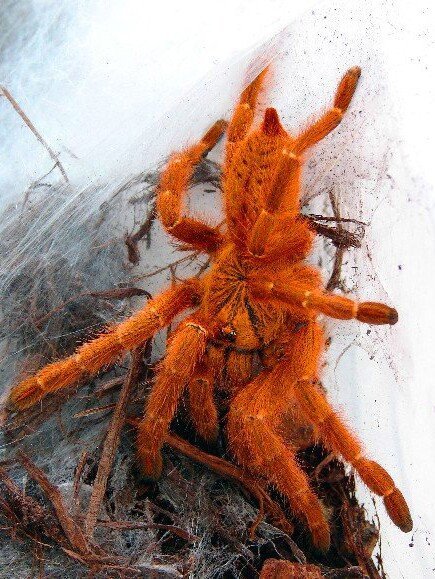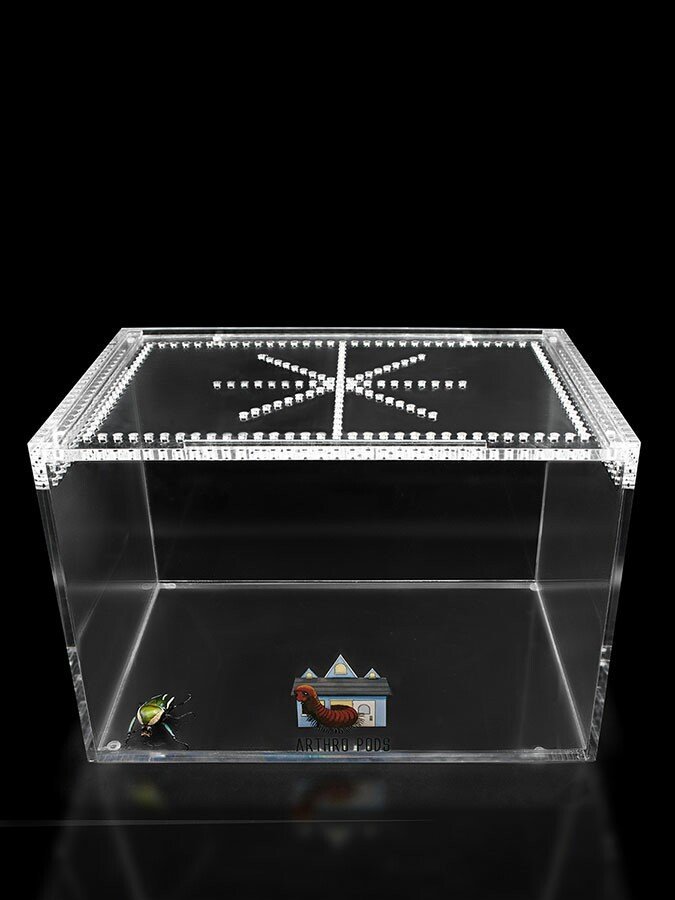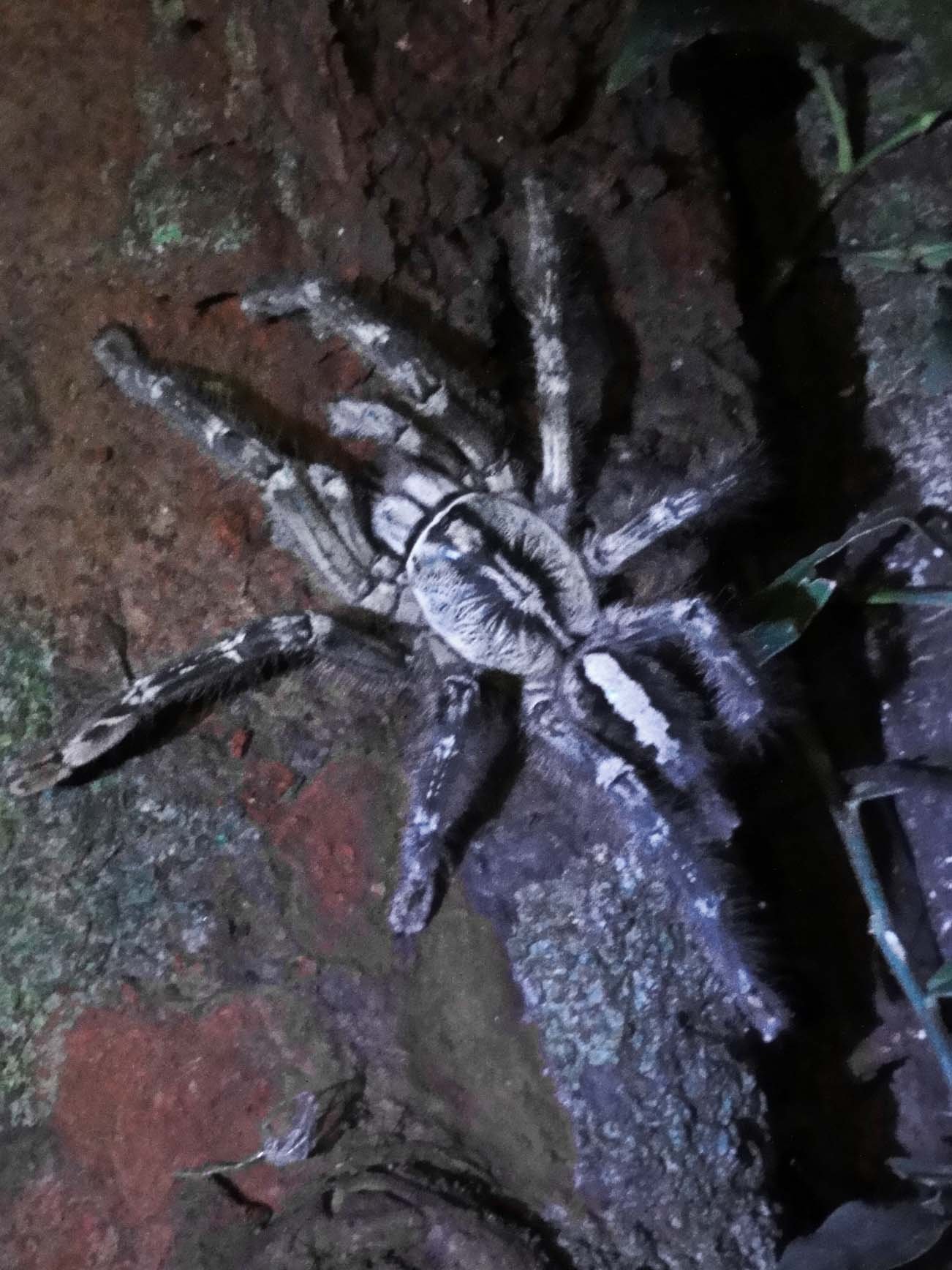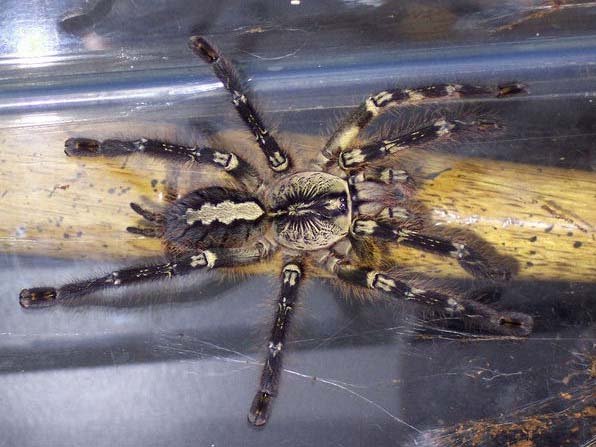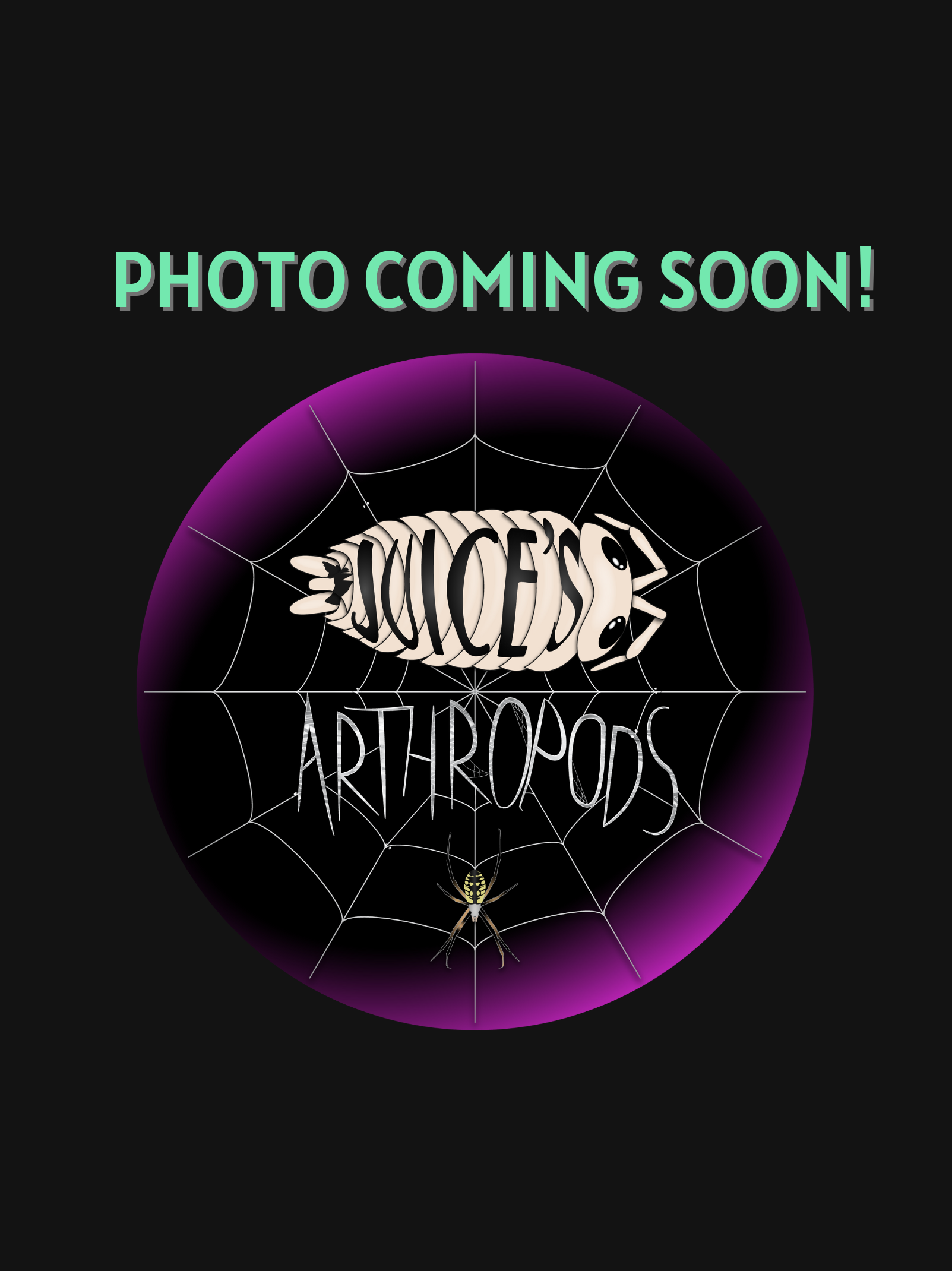What's the ideal diet for an Orange Baboon Tarantula?
All Tarantulas can eat a variety of feeders. Stick to crickets, dubia roaches, silkworms, horned worms occasionally, and a superworm or mealworm as the occasional treat!
How should I keep an Orange Baboon Tarantula?
OBTs are a unique tarantula to care for. They are technically terrestrial tarantulas that tend to live more semi-arboreal, making owning the right enclosure challenging. We’ve seen them use depth like a burrowing tarantula, while others utilized height within their webs. We recommend that all slings use at least a medium Terrestrial Terrain enclosure or a small Arboreal Bliss enclosure. Just ensure they have at least 2 inches of substrate, allowing them to do whatever they want with the space! Feed them as slings once a week, twice if their opisthosoma (abdomen) looks small, but if the opisthosoma is wider than their prosoma (cephalothorax), then wait a couple of days to feed. For juveniles or adults, stick to feeding once a week, nothing larger than their opisthosoma. Make sure to keep a full water dish at all times; wider and deeper is fine. Your tarantula can’t drown; they float on water.
How long could an Orange Baboon Tarantula live?
OBT females are said to live up to 15 years, with males maxing out around 4-5 years. All estimates are based on multiple sources.
Care Guide for Pterinochilus murinus
Key Points
Enclosure setup: Terrestrial, not fossorial. Provide adequate substrate depth but prioritize horizontal space.
Diet: Invertebrate prey. Stick to appropriately sized feeders like dubia roaches and crickets.
Humidity and temperature: 50-65% humidity, 73-78°F. Avoid overly wet conditions.
Longevity: Males 3-4 years, females 10-15 years.
Behavior: Fast, defensive, and prone to threat postures. Exercise caution during rehousing.
Webbing habits: Expect extensive webbing, often in unexpected areas of the enclosure.
Breeding: Moderate fecundity, 100-125 offspring per egg sac.
Appearance: Vibrant orange coloration, visually striking species.
Handling: Not recommended due to speed and defensive nature.
Affordability: Generally inexpensive, making them accessible to many keepers.
Some photos provided by iNaturalist and Wikipedia, credit to:
John Lyakurwa, some rights reserved (CC BY)
Ioannis Magouras, some rights reserved (CC BY)
Matt Reinbold, some rights reserved (CC BY-SA 2.0)



